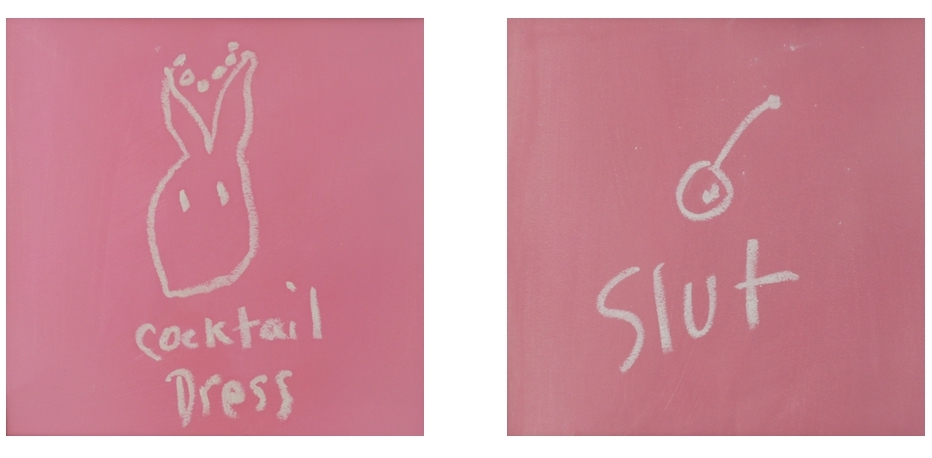
Women’s Trilogy Project Part II: Happy Hour
April 20th – May 31st, 2018
Leila Heller Gallery: 568 W 25th Street, New York, NY 10001
Born in West Virginia and raised in Houston, Texas, multidisciplinary artist Rachel Lee Hovnanian is no stranger to southern tradition. Hovanian’s recent project, the Women’s Trilogy Project, draws on the artist’s southern roots in three thematically related installations that explore addiction, gender roles and our relationship with technology. Part II of the Trilogy, titled “Happy Hour,” opens at Leila Heller Gallery on April 20th. We spoke to Hovanian about the inspiration behind the multimedia exhibition and the long-lasting impact of her childhood experiences.
Untitled: Part I of your Women’s Trilogy Project, Ndd Immersion Room, was created under a male pseudonym, Ray Lee. Did you find people’s response to this work differed from reactions to your other projects others due to the pseudonym?
Rachel Lee Hovnanian: Yes. This gender switch is a way of disguising my real-life persona and masking the artwork from being perceived as “by a woman artist.” By having this pseudonym, I do feel like individuals respond to this work differently and tend to accept it without hesitation.
With Part II, Happy Hour, you cite drawing iconography from Girl Scout and debutante traditions. Did you ever participate in those cultures growing up? How do you think they shaped your idea of femininity?
I was in Girl Scouts for about two years. I was very young but my parents were liberal activists—not the types to sit and sell Girl Scout cookies with me, so this period of my life did not last long. It was not my personal experience of being in Girl Scouts that I wanted to address with “Happy Hour”—it was how Girl Scouts and debutante traditions have influenced many of our gender and societal norms that still exist today. It was really about tracing back these traditions and finding my Southern roots.

How exactly did your upbringing in the south inform your outlook on gender roles?
I grew up on a farm in southeastern Ohio. My best friends were my brothers; I didn’t feel that I was different from them in any way. I would roll down hills, fish, build forts under the cattle ramp or play in the mud. My parents also had a place in New York and they rented a beach house in East Hampton where they would be able to see their artist and writer friends. If their friends had children, they became our playmates on the beaches. Almost all of the children were boys.
When I moved to Texas in 2nd grade, I was made fun of for not wearing a bathing suit top—it was unheard of. All the things I did with my brothers were not what girls did. I remember a boy sitting next me the first day of 6th grade and making fun of me because I didn’t shave my legs. Girls wore makeup at an early age. There was a lot of pressure regarding how you looked. My father said to me, “it’s not about how you look but what you think.”
Who or what are your biggest creative inspirations?
I would hang onto my mother’s painting apron while she painted. My parents exposed us to the activist community of writers and artists [such as] the studios of artists Janice Biala and Balcomb Green. Travel has always been important in my life, having grown up partly in Mexico.
Can you expand a bit on the relationship between domestic roles and alcoholism?
Women are traditionally the keepers of domestic order, just as the father’s role is to secure and defend that order. “Happy Hour” shows us not only the nature of these rules, but also how they are learned through a process of acculturation in every aspect of the child’s life, and the terrifying result when this order is breached through alcohol. [This] disrupts a rigid, artificial order with unpredictable disorder and interrupts the surface calmness with violence and abandonment.

You created Happy Hour over the course of three years between New York and Los Angeles—did those locations hold any particular meaning to you in your creative process? Was it helpful to be removed from the south while working on Happy Hour?
It was is easier for me to reflect on southern culture when I was physically and mentally removed—for me, it is all about contrast. I love having grown up in the south and I am a proud to be from there. I think the south has changed dramatically, but there are still unwritten rules that exist and are being handed down from from one generation to the next. When my southern friends in their 20s see the painting “Pink Lady,” they all nod and tell me of their own experiences. So even though they are all well educated and are working women, they know that they had to play the part of the “good girl” doing the “right thing” because it is tradition.
What can we look forward to with Part III, Pure?
Pure is a show that will require the viewer to interact with the work. It’s a continuation of the conversation but in a more activated way.


